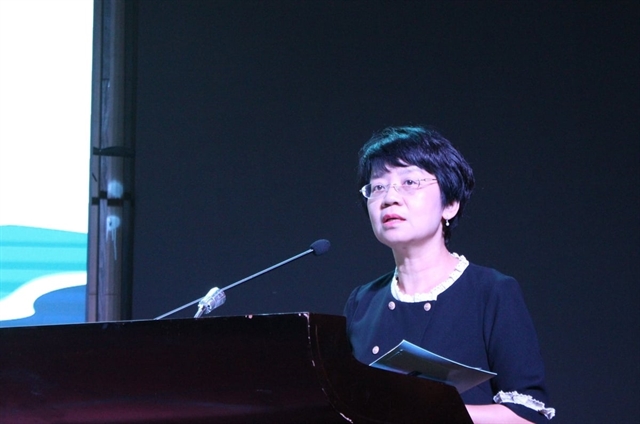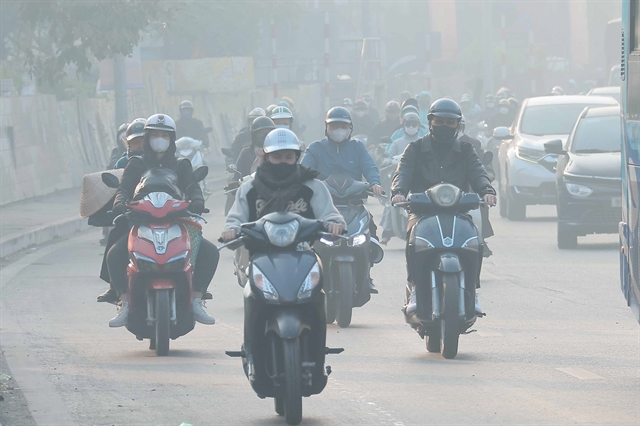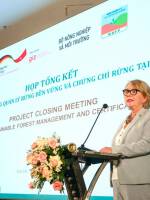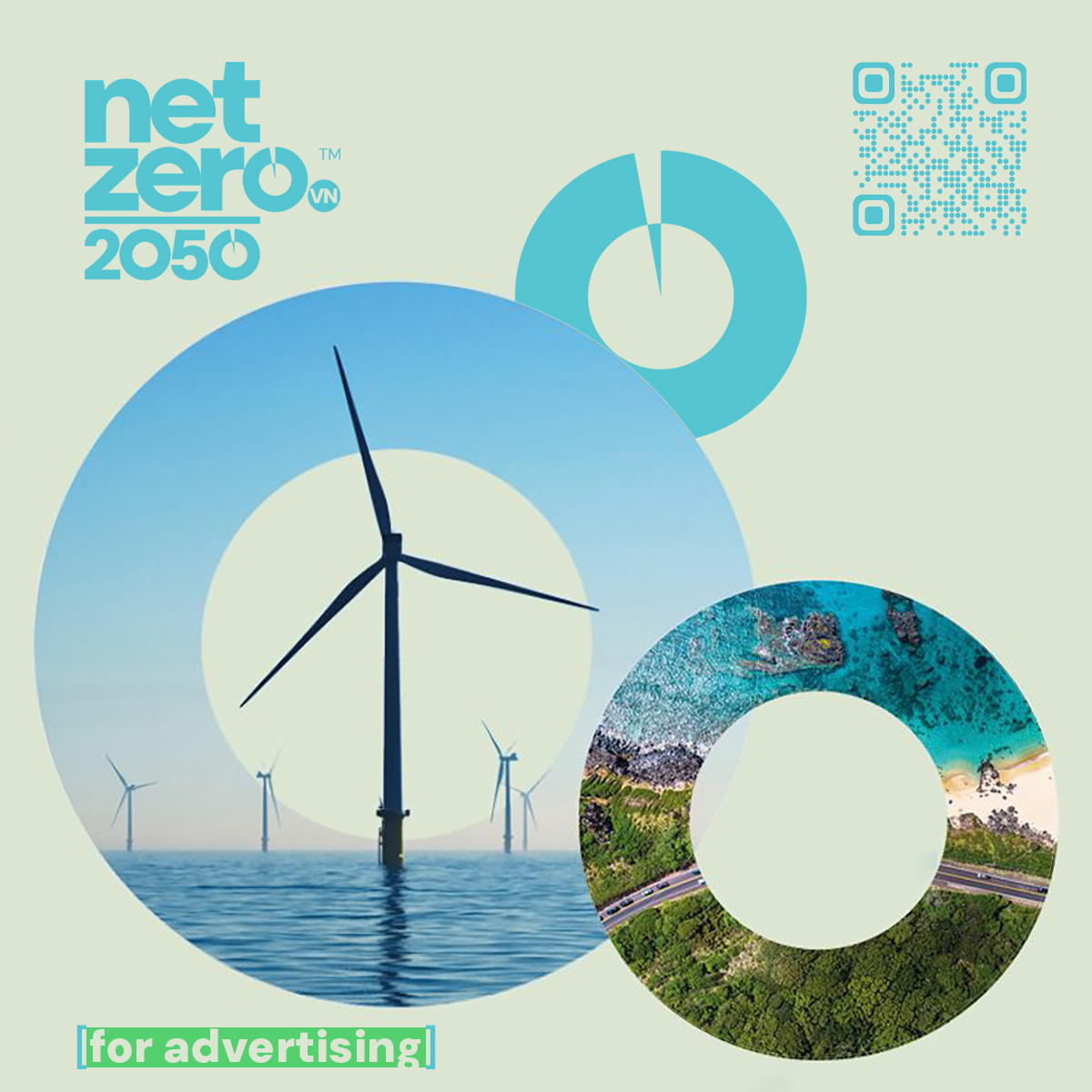
Air pollution has become one of Việt Nam’s most pressing environmental challenges, particularly in Hà Nội and Hồ Chí Minh City.
A Vietnam News Agency spoke with Nguyễn Thị Thiên Phương, deputy director of the Environment Department under the Ministry of Agriculture and Environment (MAE), about the scale of the problem, what the government is doing to address it, and how young people can help shape a cleaner future.
How would you describe Việt Nam’s progress on environmental protection in recent years?
Under the strong direction of the [ruling Việt Nam Communist] Party and the State, we’ve seen important progress that has supported more sustainable economic and social development. But the challenges remain daunting.
Our major cities are under enormous pressure. Industrialisation and urbanisation are moving at an unprecedented pace. When you combine that with unfavourable climate and weather conditions, you get worsening air and water pollution.
That is why leaders, including Party General Secretary Tô Lâm and Prime Minister Phạm Minh Chính, have repeatedly sounded the alarm.
At countless meetings and forums, they have stressed that environmental hot spots, especially Hà Nội’s air pollution, must be treated as top priorities. Their message is clear: this is not optional, it is an order.
And based on that, MAE has been developing and coordinating measures that focus resources where they matter most.
We’ve also looked abroad. Beijing is the clearest example: it took years of effort, backed by enormous investment and full political commitment, before the city began to reclaim its blue skies.
Pollution cannot be solved by a single agency, nor can it be cleaned up in five years. It requires at least a decade, often two, to tackle root causes — whether by reducing emissions at the source or by changing public awareness and behaviour.
For Việt Nam, that means mobilising strong resources to shift away from short-term ‘hot growth’ and towards growth that is green and sustainable, with investment in infrastructure, technology and community engagement.

What concrete steps is your department taking to improve air quality?
We are working on two main fronts: long-term policy and urgent short-term action.
On the policy side, we’ve drafted the National Action Plan on Pollution Remediation and Air Quality Management for 2025–2030, with a vision to 2045.
This plan lays out clear objectives, measurable targets, nine groups of tasks and solutions and 25 priority projects. It also assigns responsibilities to each ministry, sector and locality, in line with the ‘six clarities’ principle set out by the Prime Minister: clarity of personnel, tasks, timeline, responsibilities, authority, and results.
We are also finalising a roadmap to enforce national emission standards on all cars, motorcycles and mopeds currently in circulation, starting with Hà Nội and HCM City.
This will inevitably affect millions of people, but it is a vital step to control one of the most widespread and difficult-to-manage sources of emissions in our cities. Beyond cutting pollution, it will also help build more modern and liveable urban environments.
At the same time, we are addressing immediate challenges, especially as we approach the so-called pollution season at the end of the year. To prepare for late 2025, we’ve rolled out a plan that focuses on monitoring, forecasting, public communication, and enforcement.
We are expanding our air-quality monitoring network with at least 50 new systems in Hà Nội and surrounding provinces, potentially soon rising to 125. This will provide denser and more detailed data, helping us pinpoint pollution hot spots.
But monitoring alone is not enough; the public also needs timely information. Since mid-August, 48-hour air quality forecasts have been broadcast daily on Vietnam Television’s news programmes.
This is a major step forward in making scientific, reliable information widely available so that people can protect themselves. We are now working with the Institute of Meteorology, Hydrology and Climate Change to extend forecasts to at least three days.
We’re also embracing new technologies. In cooperation with the National Remote Sensing Department, we plan to deploy drones to detect straw burning, agricultural waste fires and dust from major construction sites. These tools will allow us to track pollution at its source.
At the same time, we are strengthening inspections and stepping up penalties for violations, whether from polluting factories, overloaded trucks or illegal waste burning.
The Prime Minister has assigned clear responsibilities to ministries and localities, and our Ministry is working closely with Hà Nội to carry out inspections and hold violators accountable.
Young people are often seen as central to environmental change. What role do you expect them to play?
Students and young people are the future of our nation. We hope they will plant the green seeds of tomorrow, spreading the message of environmental protection, learning from global best practices and bringing those lessons back to Việt Nam.
Their creativity, energy and aspirations will be the strongest driving force for building a greener future. Every initiative matters – whether large or small. Together, these contributions will shape a future that is not just prosperous, but also sustainable, trustworthy and full of happiness.
What more needs to be done to make lasting progress?
Air pollution is not a challenge that can be solved overnight. Beijing’s story shows it can take many years and investments worth billions of US dollars to achieve meaningful results.
For Việt Nam, success depends on shared responsibility. MAE cannot do this alone. Communities, businesses and local governments must all work together. This is especially true for Hà Nội and the surrounding provinces of the Red River Delta, where pollution easily crosses administrative boundaries.
Local governments in Hà Nội, HCM City and other key areas must keep pushing forward with solutions: expanding public and green transport networks, tightening control of construction activities, reducing industrial emissions and putting an end to open burning.
At the national level, we will continue to inventory emission sources and invest in standardised monitoring stations, so that air-quality data is reliable and comprehensive.
Partnerships will play a decisive role, too. The For a Green Future Fund and Vingroup are already on board, and through an MoU between MAE and Vingroup, we hope to work together in four key areas: cutting-edge monitoring and forecasting, green and circular economy investment, international cooperation to bring in new technology and green finance and grassroots campaigns to inspire community action.
(VNS)




